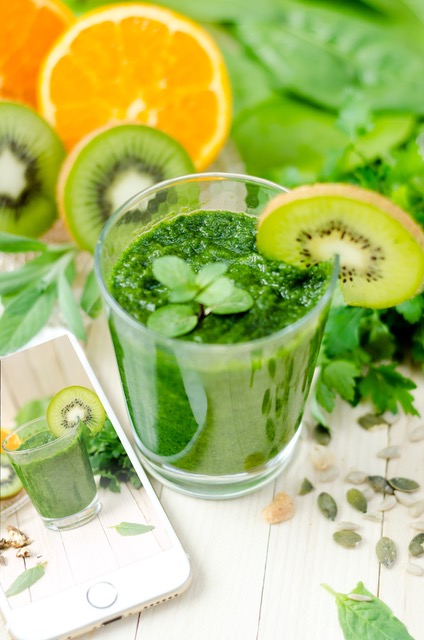About bones
Bone is a living tissue that is constantly changing and renewing itself. There are two different types of cells in your body that carry out this process: osteoclasts and osteoblasts. Osteoclasts break down old bone, creating cavities. Osteoblasts build new bone, filling the cavities.
During childhood and adolescence, there is an emphasis on building new bones, increasing their density and strength. By the time you get to your mid to late twenties, you will have reached your maximum bone strength, which is called peak bone mass.
Then, after the age of 40, the ageing process leads to an increase in the breaking down of bone. This means you start to lose bone density and strength, making bones more susceptible to fractures.
Osteoporosis
A fear– or worse still, a diagnosis – of osteoporosis makes many women think seriously about the health of their bones. The ageing process is the silent thief that robs up to 25% of your skeleton by the time you reach 50.
Particularly prevalent in women after menopause due to falling levels of both oestrogen and progesterone, getting older increases the risk of bone fractures. Osteoporosis is also more common in women because they tend to have smaller, less dense bones than men.
However, it’s not just a female phenomenon. Osteoporosis is still common in men, affecting one in five, often secondary to another health problem, due to decreased testosterone.
Are you at risk?
There is a genetic component to osteoporosis, so a family history does increase your risk. However, there are a number of other lifestyle factors that also have an impact. Which of these apply to you?
- Previous fragility fracture (breaking a bone following a minor incident)
- History of maternal hip fracture
- Thin or small bone frame
- Low levels of sex hormones – lack of oestrogen/progesterone in women, and testosterone in men
- Low Body Mass Index (BMI)
- Conditions that affect the absorption of food like Crohn’s or coeliac disease
- Conditions like rheumatoid arthritis, hyperthyroidism and parathyroid disease
- Use of some pharmaceutical drugs like long-term or high-dose use of steroids, anti- epileptic drugs or antacids
- Excessive alcohol consumption
- Low stomach acid or frequent indigestion
- Smoking
- A diet low in calcium
- Low levels of vitamin D
- Lack of weight-bearing exercise (bodyweight exercise/ weights)
More than just calcium
People often think what’s needed to protect bones is to crack open the calcium supplements but it’s a lot more complex than that. Although calcium is the most prevalent mineral in bone, the causes for osteoporosis are much more multi-factorial than a lack of dietary calcium.
Magnesium – used in so many processes in the body – is now considered key in the prevention and reversal of osteoporosis. Even mild magnesium deficiency is thought to be a risk factor in the development of the condition.
While bones use phosphorus as building materials, the ability to absorb calcium into bones depends on vitamin D and is assisted by the trace mineral boron. Vitamin C makes collagen, and zinc helps make new bone cells. Vitamin K2 helps prevent the loss of calcium from bones.
This orchestra of nutrients is often found in bone-friendly supplements. But rather than just buy up the supplement aisle in the health food shop, if you have any concerns about your bone health, you might like to consider consulting with a nutrition professional as well as your GP.
A qualified nutrition professional will work with you to create a diet, lifestyle and supplement plan tailored to your own unique requirements.
Are you making any of these diet mistakes?
Drinking too much coffee alcohol and other diuretics – These cause you to excrete minerals. Cola drinks are especially bad because they are high in phosphorus and promote the excretion of calcium and magnesium which are necessary for good bone health.
Eating too much refined sugar and/or carbohydrates. This depletes the minerals necessary for good bone health.
Eating a very high protein diet. While everyone needs protein, protein-rich foods are acid-forming. The body must keep the blood pH as close to neutral as possible. Minerals are needed as buffers, and once stores of sodium are used up, calcium is taken from the bones to neutralise the acid. Therefore, the more protein you eat, the more calcium you may need.
Not eating enough fruit and veg. A diet high in fruit and vegetables has been found to reduce bone turnover and increase bone density.
Food for Strong Bones
Research has shown that it’s far better to get your nutrients from food than from a supplement.
Calcium – Calcium-rich sources of food are dark leafy greens (kale, rocket, watercress), almonds, cheese, yoghurt, broccoli, chia seeds, sesame and tahini, sardines and canned salmon (because of their edible bones), whey protein, edamame beans and tofu.
Research suggests that it is not recommended to rely solely on plant sources alone for your calcium as it can be harder for the body to extract calcium from plants than from animal sources. The ideal scenario seems to be that you spread your calcium intake, including a source of animal-derived calcium, across the day.
Vitamin D – You’ll find vitamin D in oily fish like salmon, trout, mackerel, sardines and fresh tuna, egg yolks, liver and cheese. That said, it’s difficult to get a therapeutic dose from food, and it’s worth getting your vitamin D tested so you can supplement adequately, especially in the winter months.
Vitamin K2 – The two most common forms of vitamin K2 are MK-4 and MK-7. MK-4 exists in small amounts in liver, eggs and meat. Fermented foods like cheese, sauerkraut and a soybean product called natto contain MK-7.
Vitamin C & Collagen – The best food source of collagen is bone broth. Vitamin C also helps to support the production of collagen, and you’ll find vitamin C in all kinds of fruit and veg, including broccoli, cauliflower, kale, red pepper, kiwi, strawberries and citrus fruit like oranges.
Magnesium, Zinc & Phosphorus – Foods rich in magnesium are dark chocolate, avocados, almonds, legumes, tofu, seeds, wholegrains and leafy greens. Good sources of zinc include beef, prawns, spinach, flaxseeds, oysters and pumpkin seeds. Foods rich in phosphorus include pork, cod, salmon and tuna.
Healthy Weight Happy Bones
Apart from making you feel hungry and miserable and wrecking your metabolism, low-calorie diets are bad news for your bones. Studies show that diets providing fewer than 1,000 calories per day can lead to lower bone density in normal weight or overweight people.
Being underweight – especially in perimenopause and beyond – may contribute to reduced bone density and bone loss. A low body mass index is an important risk factor for low bone mass and increased bone loss in early postmenopausal women.
The same is true at the other end of the scale. Research suggests that being obese can impair bone quality and increase the risk of fractures due to the stress of excess weight – so finding your healthy weight keeps your bones happy, too.
Stress and your bones
There are all kinds of ways in which stress robs you of your health. As far as bones are concerned, it’s worth knowing that an increase in the stress hormone cortisol impairs calcium absorption, which may cause the leaching of important minerals and, in turn, result in a range of mineral deficiencies.
Do you have a good stress management action plan, which includes plenty of relaxation and good quality sleep?
Exercise to strengthen your bones
We know that people who lead a more physically active life tend to have a higher bone mineral density – and, consequently, stronger bones – than those who are more sedentary. If you know you don’t move enough, now is a great time to start. The best exercise for building stronger bones is weight-bearing exercise. That means the kind of exercise where you are supporting the weight of your body, like dancing, walking, lifting weights or using resistance bands, rope skipping, climbing stairs, playing tennis, kettlebells, hiking, yoga and even gardening.
Exercise also strengthens muscles, improving balance and thereby reducing the risk of falls.
According to the Royal Osteoporosis Society, 50 minutes of moderate weight-bearing exercise on most days is recommended. To ensure you feel motivated to exercise regularly, choose an activity you actually enjoy. Start slowly and build up gradually, and if you have any concerns about starting to exercise, please speak to your GP. Remember, exercise is not just good for bones and muscles, it benefits your general health, too.
To discuss your Happy Bones Action Plan press on the button below to schedule a free 30-min health assessment session.
REFERENCES
Prynne CJ, Mishra GD, O’Connell MA, Muniz G, Laskey MA, Yan L, Prentice A, Ginty F (2006) Fruit and vegetable intakes and bone mineral status: a cross-sectional study in 5 age and sex cohorts. American Journal of Clinical Nutrition 83: 1420-1428.
Anderson et al., (2016) Calcium Intake From Diet and Supplements and the Risk of Coronary Artery Calcification and its Progression Among Older Adults: 10-Year Follow-up of the Multi-Ethnic Study of Atherosclerosis (MESA). Journal of the American Heart Association, 5 (10).
Villareal et al., (2015) Effect of Two-Year Caloric Restriction on Bone Metabolism and Bone Mineral Density in Non- Obese Younger Adults: A Randomized Clinical Trial. Journal of Bone Miner Research, 31 (1).
Early Postmenopausal Intervention Cohort (EPIC) study group, Journal of Bone and Mineral Research. DOI: 10.1359/jbmr.1999.14.9.1622.
Deutsch E (1978) Pathogenesis of thrombocytopenia. 2. Distribution disorders, pseudo-thrombocytopenias. Fortschr. Med.96 (14): 761–2. Sundh et al., (2015) A High Amount of Local Adipose Tissue Is Associated With High Cortical Porosity and Low Bone Material Strength in Older Women. Journal of Bone Mineral Research, 31 (4).


